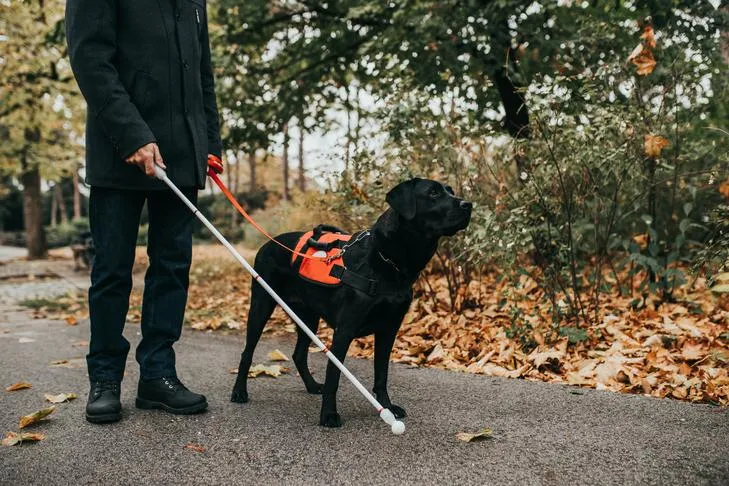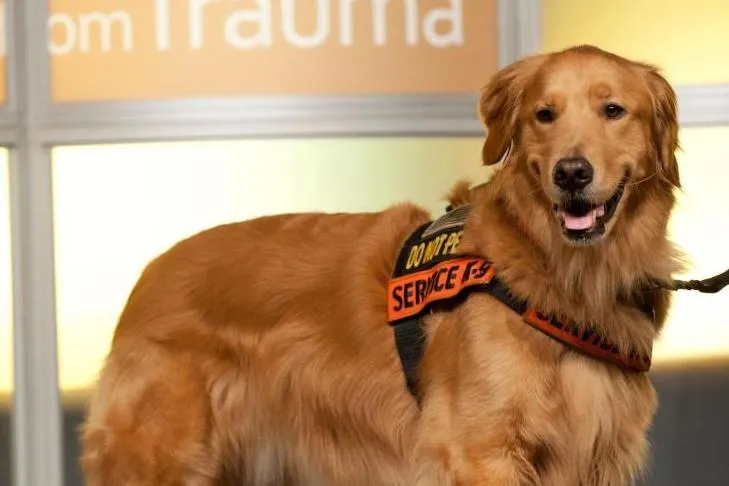Service dogs play a vital role in enhancing independence for people with disabilities, offering trained support that goes beyond companionship. These highly skilled canines perform specific tasks, from guiding the visually impaired to alerting on medical emergencies, all through rigorous service dog training. As demand grows, understanding proper training methods ensures these dogs succeed in public and daily life. For puppy owners starting early, resources like how to get puppy to follow on leash lay foundational skills essential for service roles.
Studies highlight the health benefits dogs provide, and service dogs amplify this with specialized abilities. Over the past decade, their use has surged, prompting efforts by organizations like the AKC to address training standards, public access, and misuse. Today, breeds beyond traditional German Shepherds are trained, expanding options for various disabilities.
What Defines a Service Dog?
Under the Americans with Disabilities Act (ADA), a service dog is individually trained to perform work or tasks directly related to a person’s disability. This distinguishes them from pets, focusing on physical or mental impairments that limit major life activities. Service dog training emphasizes tasks like navigation for the blind, sound alerts for the deaf, or mobility support for wheelchair users.
Guide dogs help visually impaired individuals traverse environments safely. Hearing dogs signal doorbells or alarms, while mobility dogs retrieve items or provide balance. Medical alert dogs detect seizures, low blood sugar, or allergens, intervening promptly. Psychiatric service dogs manage conditions like PTSD by interrupting harmful behaviors or reminding about medication.
 Service dog team working in a public park setting
Service dog team working in a public park setting
These dogs must remain focused, ignoring distractions—a key outcome of comprehensive training. The ADA views them as working animals, not pets, granting public access rights.
Ideal Breeds for Service Dog Training
Service dogs come in all sizes, matched to tasks: small Papillons excel as hearing dogs, while large Great Danes or Bernese Mountain Dogs handle mobility. Versatile Poodles—in Toy, Miniature, or Standard sizes—train for scent detection or object retrieval. Labrador Retrievers, Golden Retrievers, and German Shepherds dominate guide dog programs due to their temperament and strength.
Organizations like Canine Companions breed Labs and Goldens, selecting for trainability and health. NEADS sources from breeders and shelters, prioritizing alert, high-energy candidates. Regardless of breed, top service dogs are handler-focused, desensitized to distractions, and reliable in diverse settings.
Common challenges in popular breeds like Labs can be addressed early; check behavior problems with labrador retrievers for proactive tips.
 Labrador Retriever service dog guiding a blind man through a fall park
Labrador Retriever service dog guiding a blind man through a fall park
Vests and Identification Myths
No ADA requirement exists for vests, harnesses, or tags on service dogs—gear alone doesn’t qualify them. Emotional Support Animals (ESAs) offer comfort via presence but lack task training, barring public access. Therapy dogs provide volunteer comfort in hospitals or courts but aren’t service dogs. Courthouse or facility dogs aid vulnerable witnesses under state laws, separate from ADA protections.
Misidentification confuses access rules. For visual training aids, watch how to leash train a puppy video.
Sourcing and Professional Training
Non-profits and for-profits train service dogs nationwide, covering public access skills like house training and calm settling. Dropout rates hit 50-70% due to strict standards, but washouts often find homes. Costs exceed $25,000, though aid is available. Vet organizations thoroughly before committing.
Training Your Own Service Dog
The ADA allows self-training. Select calm, eager-to-please candidates capable of socialization and repetition. Build foundations: potty training on command, distraction-proof focus, and basic obedience. AKC’s Canine Good Citizen program sets benchmarks; extend to disability-specific tasks.
Socialize broadly and teach commands like recall—see how to train a puppy to come on command. Only two questions verify: Is it a service dog for a disability? What task does it perform?
 Nova Scotia Duck Tolling Retriever practicing obedience in an outdoor park
Nova Scotia Duck Tolling Retriever practicing obedience in an outdoor park
Programs like CGC Plus ensure reliability for veterans.
Combating Fake Service Dogs
Fraudulent claims undermine true users, risking safety. AKC advocates penalties, tracking over 150 laws since 2016. Coalitions push credentials like Service Dog Pass for travel verification.
Prevent issues like jumping with how to stop a dog jumping on sofa.
 Golden Retriever service dog Tuesday posed professionally for recognition
Golden Retriever service dog Tuesday posed professionally for recognition
Service dog training transforms lives, fostering independence. Start with solid foundations, seek reputable guidance, and commit to ongoing practice. Contact professional trainers or explore AKC resources to begin your journey today.
